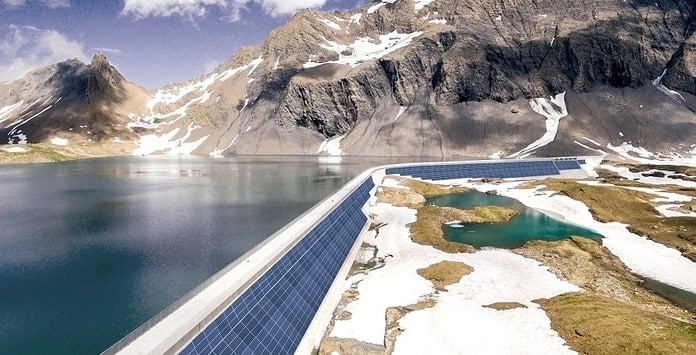A Hydropower It is one of the oldest and most widely used forms of energy and is classified as a renewable energy.
A Hydropower production It is mainly implemented through Hydroelectric power stationswhich are associated with large or medium-capacity dams, which block water from rivers, forming a water reservoir, sometimes leading to interruption of water flow.
These stations use energy from the difference in level between the reservoir and the river, below the station, which turns turbines and their generators, producing electricity. Learn more about how this is done. Hydropower production works.
Hydroelectric power is increasingly being used in Portugal and more and larger dams are being designed and built.
Advantages and disadvantages of hydropower
In fact, this technology has tremendous advantages over other types of devices. Energy productionHowever, there are also some Disadvantages of using hydropower.
Advantages of hydropower
- Its reliability and responsiveness to changes in demand are high.
- It is a renewable energy, meaning it is inexhaustible.
- Do not pollute the environment.
- Providing local development (creating waterways, building communication roads, promoting recreational and tourist activities, etc.).
- Its production cost is low.
- Allows for some form of local supply of irrigation, etc.

Disadvantages of hydropower
- It can cause displacement of the population on the banks of the river and expansion of the territory (depending of course on the type of relief and the area in which the project is located);
- It causes soil erosion, which in turn affects the local vegetation cover;
- Its construction requires the formation of large water reservoirs that ultimately lead to profound changes in ecosystems;
- High installation and dismantling costs.
Are hydropower plants renewable energy?
Large hydropower projects can reduce carbon emissions, but it is a mistake to think of them as “renewable energy.”
Hydroelectric dams are the ultimate expression of man’s control over nature. In addition to power, they create reservoirs of clean water, which for some is a feast for the eyes and a place of quiet recreation.
It promises to control flooding, provide a permanent source of water for irrigation and, over time, provide fresh fish. It is an economist’s and an engineer’s dream and, along with the dynamic images of cranes, diggers and groups of men in helmets involved in its construction, it is an instant marketing opportunity for politicians keen to demonstrate their commitment to progress.
Some say hydropower has green credentials because it uses water, which is free, abundant and essentially safe. It harnesses gravity, converting the energy of water passing through electricity into a clean, carbon-free process. With global concerns about carbon emissions on the rise, it’s no surprise that hydropower projects have a certain appeal for governments to meet their countries’ energy needs.
But this image of cleanliness has been eroded over time by criticism over the impact of these structures on the environment and the lives of the people displaced by their construction. As large dams have come under scrutiny, their popularity with governments has steadily declined over the past two decades.
But this trend has recently begun to reverse. Mega water projects are once again underway, and there is a construction boom all over the world, from China to Brazil.
Is hydropower “clean”?
Part of this anxiety is rooted in the feeling that displacing thousands of people, cutting down vast tracts of land, digging up and crushing rocks—in short, systematically altering ancient landscapes with unpredictable ultimate consequences—is not quite right, from an environmental or ethical standpoint.
The other part of this concern relates to the use that will be made of this energy generated by large water projects.
For some developing economies, there is reason to explore the careful and judicious use of hydropower in order to meet the energy needs of a particular region, especially when it supplements its water needs.
When energy is generated by necessity and meets local needs, the idea of calling hydropower “renewable” makes sense, despite the controversy that always seems to surround this type of project.
When hydropower generation goes from a necessity to meet energy demands to a traded commodity, and when it has a huge impact on the local ecosystem, it is imperative to ask ourselves whether we should take advantage of the pros and cons of the term “renewable.”





